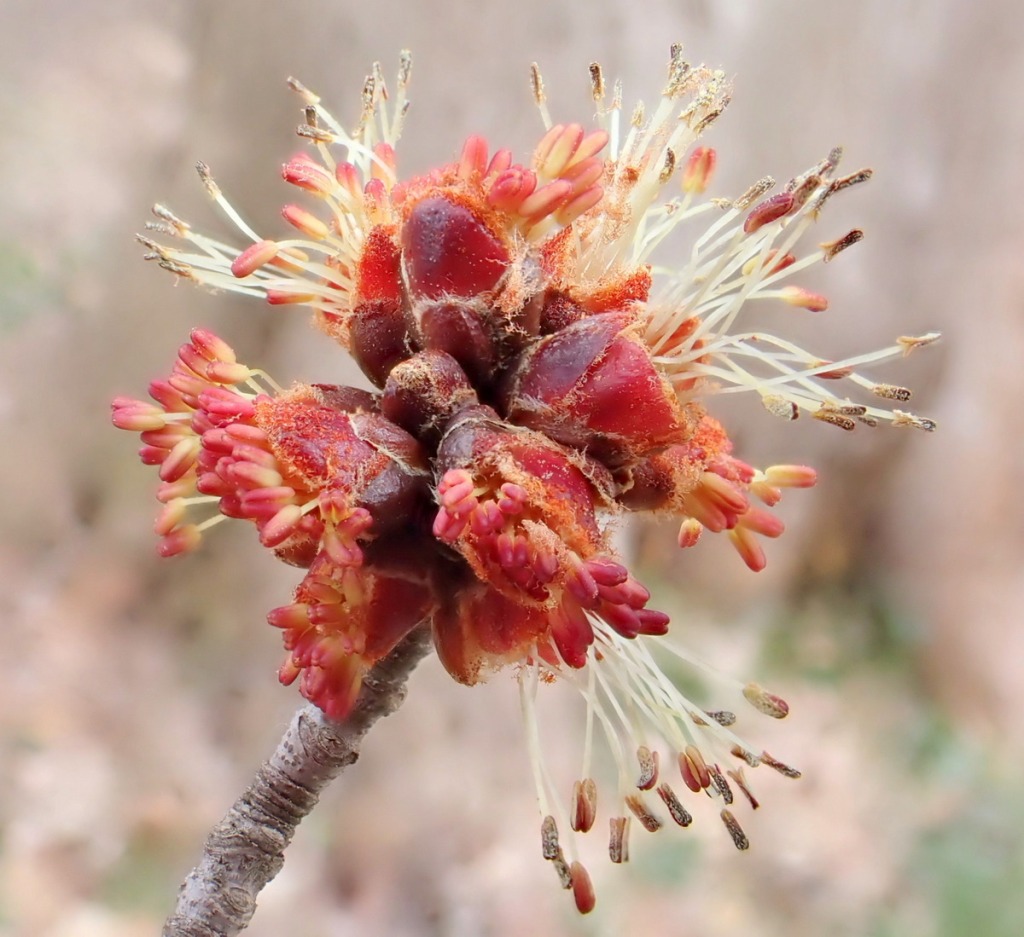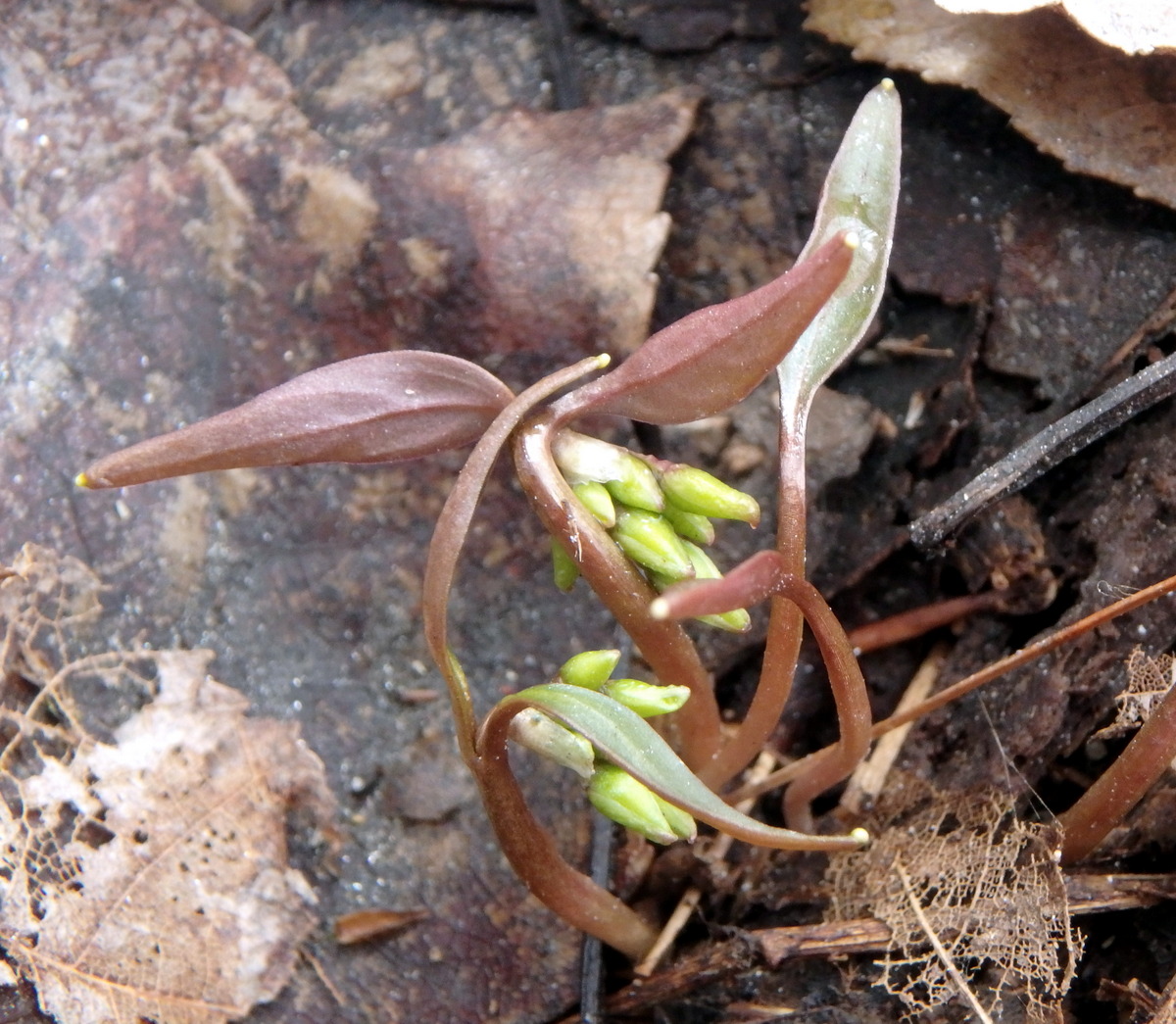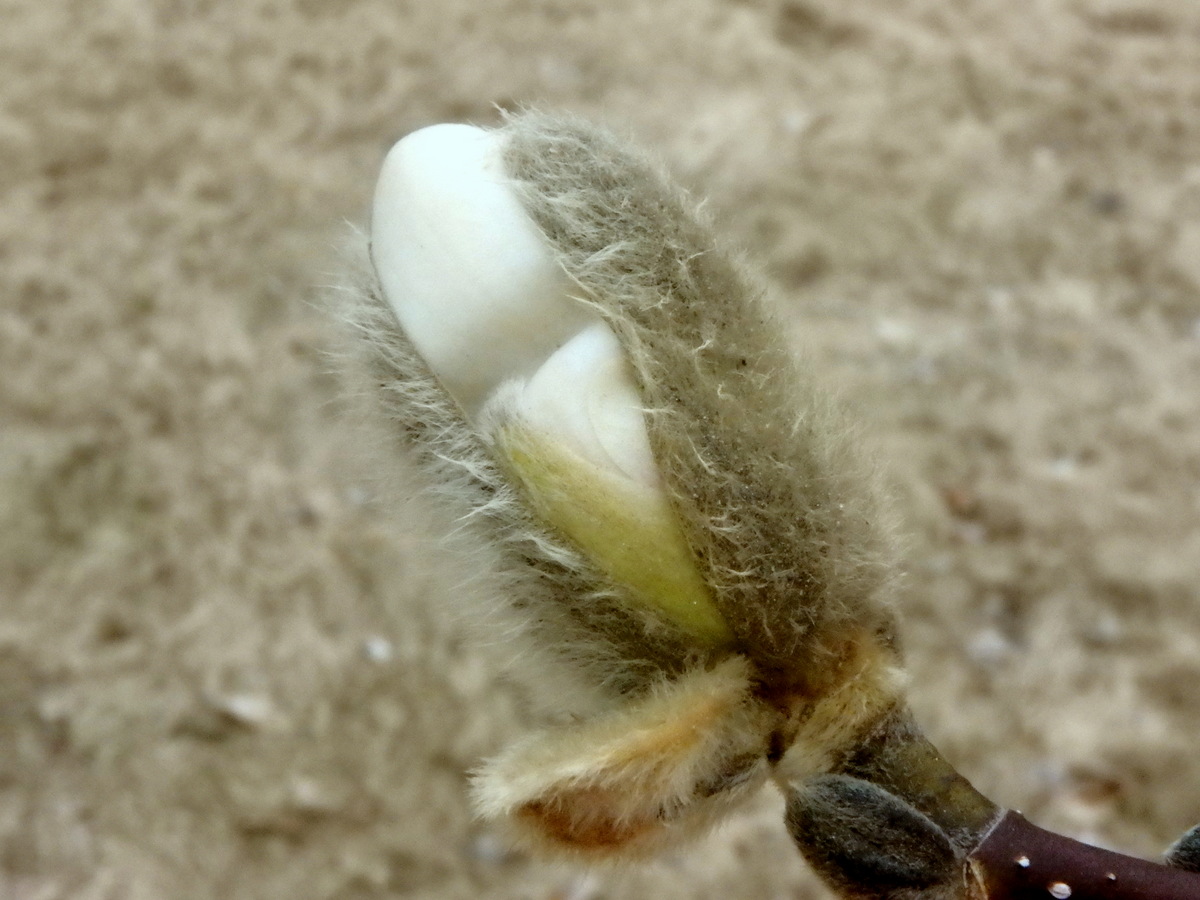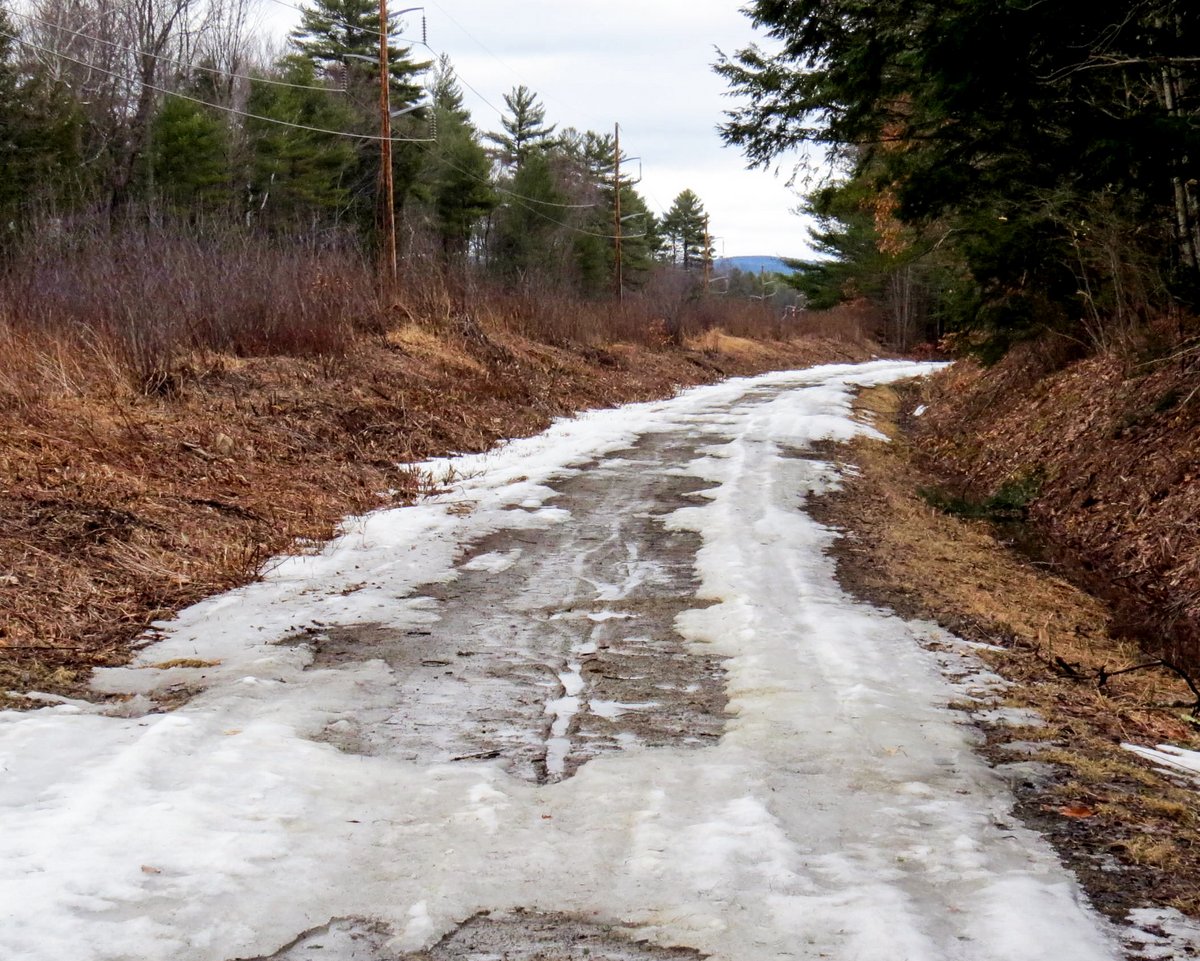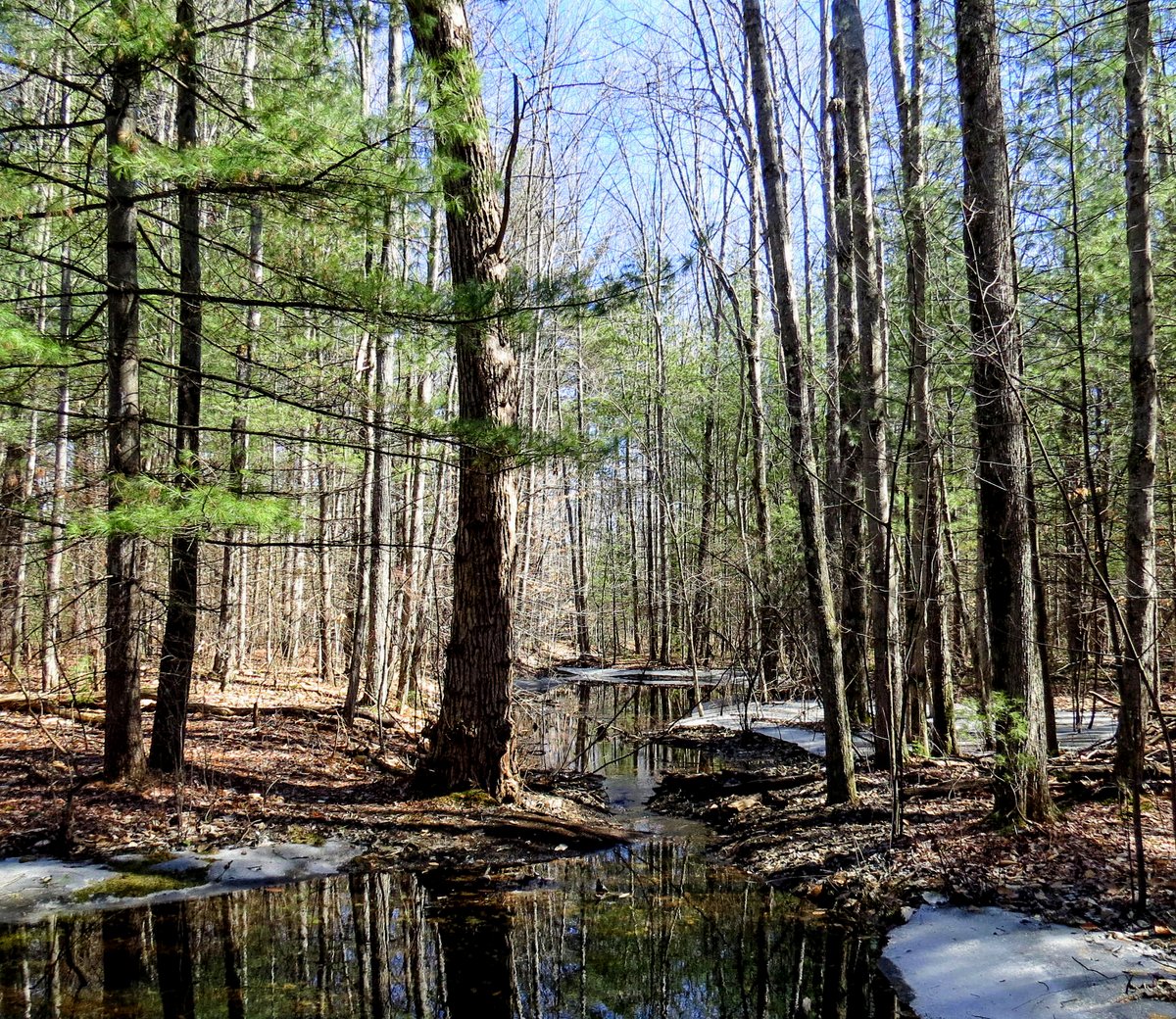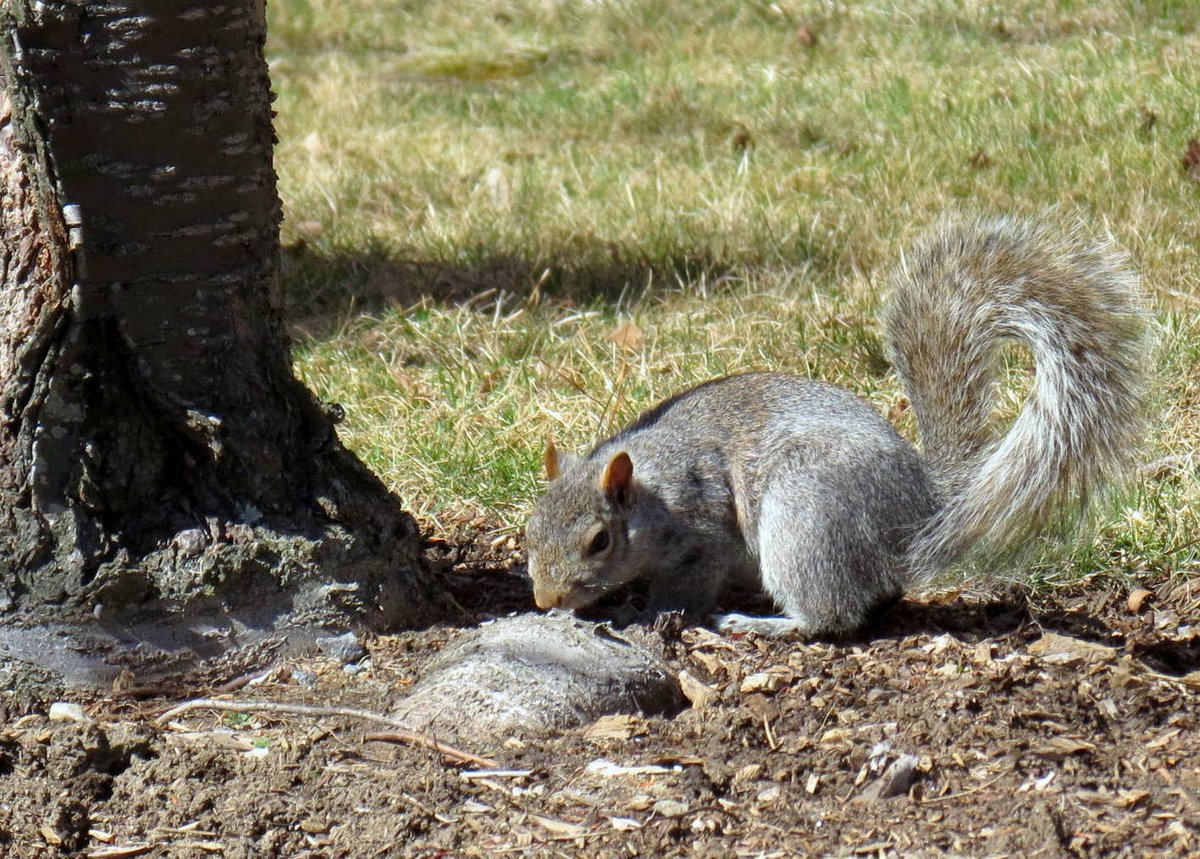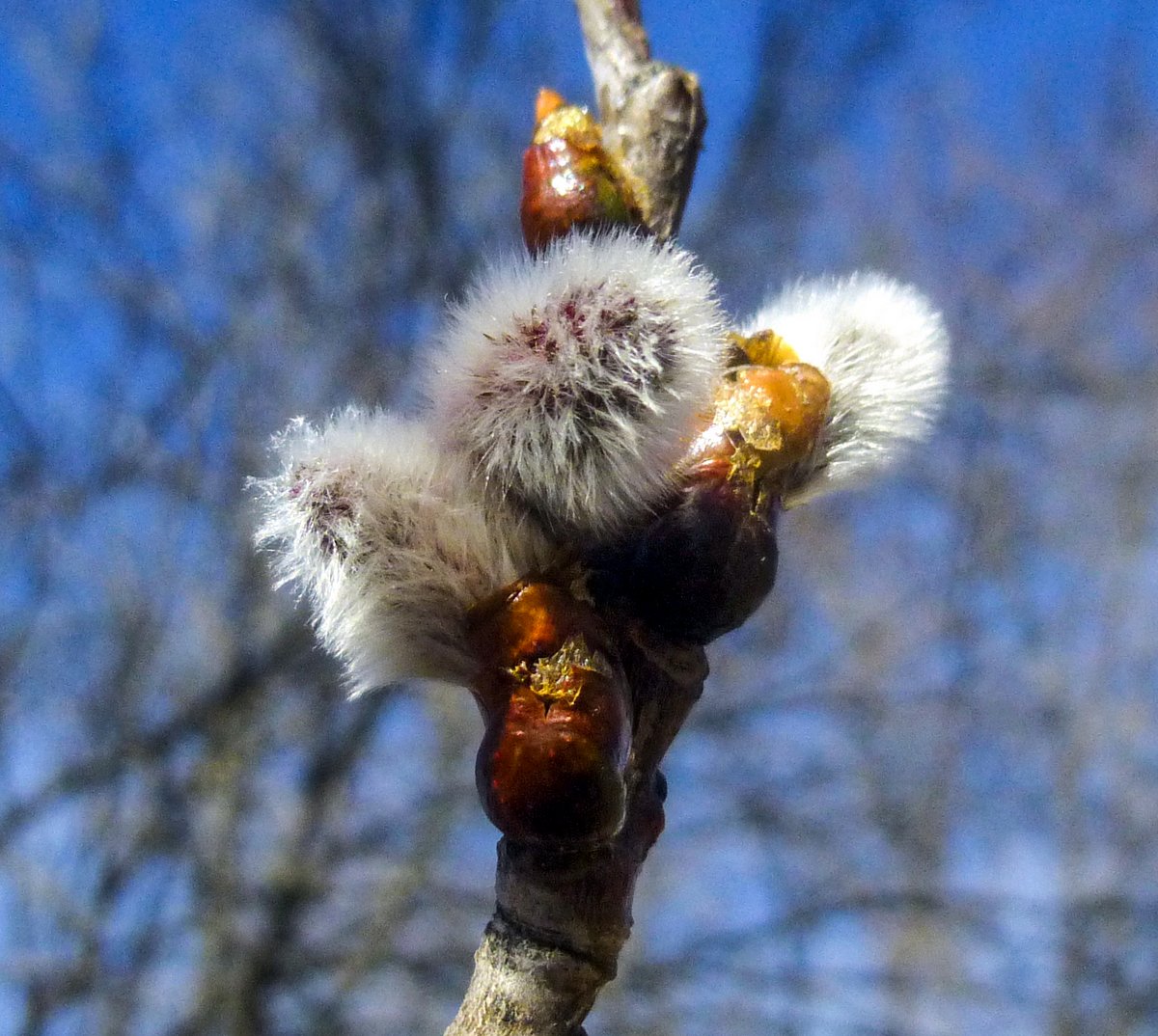
I went over to Perkin’s Pond in Troy last week to see how spring was getting on but it still looked wintery, even though the day was gloriously spring like. The view of Mount Monadnock was as good as it gets, all frosted with snow like it was. At just over 3,000 feet, It’s the tallest peak in the area and until recently it was the second most climbed mountain in the world after Mount Fuji in Japan. Now however, there is said to be a mountain in China that sees over two million visitors each year. Mark Twain, Nathaniel Hawthorne, Henry David Thoreau, and Ralph Waldo Emerson are among a few of the well known people who have climbed Monadnock, and countless poets, authors, artists, and musicians have described how it made them feel. Thoreau said that it was far more beautiful when seen from a distance than it was looking off from the summit, and I agree. Its name is said to mean “mountain that stands alone” in the native Abenaki language. In warmer months this stretch of road is often lined with painters, photographers, and tourists.

Years ago, a friend and I climbed Monadnock in mid April when the snowpack looked much like it does in this shot. You can if you’re careful, pick your way around the snow, but there are spots where you have to go through it. We climbed unprepared for the conditions, and foolish mistakes like that can be dangerous and even deadly up there. In places we found ourselves in snow so deep we had to spread ourselves out and kind of swim -wriggle -crawl over the top of it. When we finally got to the top exhausted and drenched, we found ourselves in a fog so thick we couldn’t see enough of the landscape to know if we had even reached the summit. The world had become a blank, uniformly gray nothingness. Over on the right in this shot you can see a group of maybe 7 or 8 people, and I’d guess when they got got home they were able to wring water out of everything they wore, just like we were that day. But at least they weren’t in a fog.

The ice on Perkin’s Pond was starting to melt but I could see tracks on the ice leading to or away from the open water. I hope they were made by some thing rather than some one. This is not a good time of year to be on the ice.
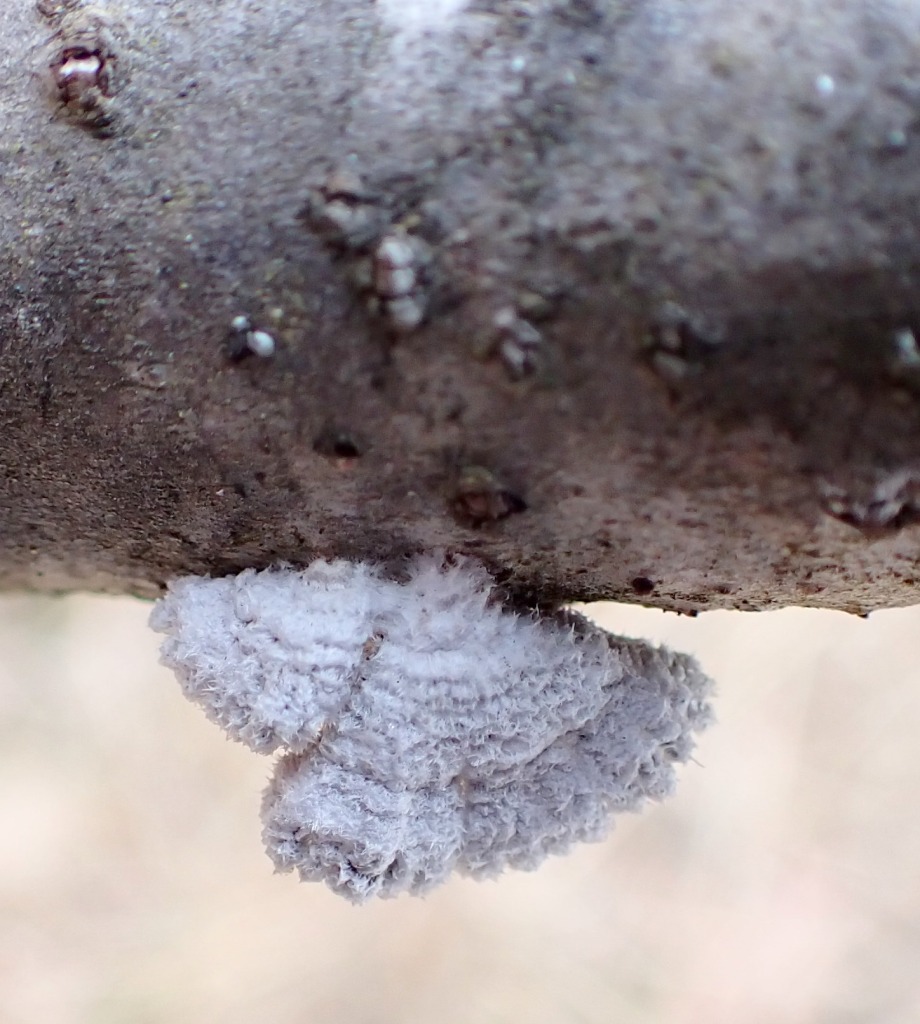
I saw some shy old friends, the split gill mushrooms. These true winter mushrooms are small and always wear a fuzzy coat, as can be seen here. I couldn’t call them rare but neither are they common. I might find one group of them per year if I’m lucky.

These examples were dry and quite small; the largest one in this shot might have been as big as an aspirin. The “gills” on the split gill fungus are actually folds in the tissue of its spore bearing surface that split lengthwise when it dries out. The splits close over the fertile surfaces as the mushroom shrivels in dry weather. When rehydrated by rain the splits reopen, the spore-producing surfaces are exposed to the air, and spores are released. These little mushrooms are very tough and leathery and even though they’re white they can be hard to spot.

I mentioned in that last post how subtle the start of spring can be, and these hazelnut catkins illustrate that very well. You can just see that they’ve started to turn golden from the green they’ve been all winter, and that’s just one subtle sign of spring that I look for. At this time of year, it really doesn’t matter what the calendar says.
You can look at the seasons in two ways. Meteorologically, seasons go by temperature, with the hottest three months in the northern hemisphere being summer and the coldest three months winter. This way, winter starts on December first, spring on March first, summer on June first, and autumn on September first. This is the way meteorologists prefer to see the seasons. Another way to look at the seasons is astronomically. Equinoxes are when day and night are closest to equal length; spring begins around March 21st and autumn around September 22nd. The solstices are days with the longest and shortest amounts of sunlight; summer begins around June 21st and winter around December 22nd. The dates of the solstices and equinoxes can vary from year to year, and that’s why meteorologists don’t use them. They like solid, three month intervals. I forget all of it and watch nature.

Poplar catkins look a lot like pussy willow catkins and that’s not surprising, because poplar trees are in the willow family. North American poplars are divided into three main groups: the cottonwoods, the aspens, and the balsam poplars. If the buds aren’t sticky then the tree belongs in the aspen group. These bud scales were beautifully shiny but not at all sticky so this was an aspen. Poplar catkins often appear right around the same time willow catkins do. Maybe a week or so later.

I saw signs that the alder catkins were loosening up. The grayish “glue” that keeps water from getting in under the bud scales had disappeared on the catkins that receive the most sunlight and they had also started to show some red and purple coloration. When the bud scales open and reveal the flowers the purple and green catkins sparkle as they move on the breeze, and it looks like jewels have been hung from the bushes. It’s another of those many things that makes spring so special.

Encouraged by the warm sunshine I went to the local college campus again. There I found the first snowdrops I’ve seen this spring. They bloom early but they aren’t the earliest flowers to appear.

I also saw the first purple crocus of the year, and it was beautiful. I haven’t seen any bees yet but I’ve seen a lot of other insects.

I found cress in bloom as well. I don’t know if it’s winter cress or spring cress but it doesn’t matter; all that matters is its beauty. It’s a very early flower that I always like to see.

It’s also a very small flower. A bouqet of four or five of these could hide behind a pea. I wanted to put a flower on a penny for scale but I didn’t have a single coin with me. They are so hard for me to see it took me a few tries to get a shot that was useable.

This was the strangest thing I saw on this day. Blue leaf buds? I’ve never heard of such a thing, but I tried to just forget the color and looked the plant over. From what I saw I believe it was some variety of big leaf hydrangea but I couldn’t swear to it. There were several plants in a group, all maybe two to three feet tall, and they baffled Google lens as well. I’m hoping someone might know what it is; maybe one of the master gardeners out there? I’d love to hear about it. I’d plant it just for that beautiful blue bud color.

One of my favorite spring flowers is reticulated iris and here they were in full bloom. When I first started visiting the college campus to see the spring flowers that bloomed there I often saw these little irises coming up and blooming right through the snow. Back then they were the earliest of all the flowers on the campus but no longer. Now they’re well behind crocuses, and I can’t imagine why.

In the last post I showed you some crocuses trying to bloom under the snow, and this is what I found in that spot on this day. After a long New Hampshire winter, a scene like this can melt even the hardest of hearts. Flowers give so much and ask so little. They are precious jewels, and I try to remember to be grateful for the richness they bring to life each time I see them.

I saw a new spring blooming witch hazel in bloom. It was very showy and looked much like its cousin the native fall blooming witch hazel. These spring bloomers are extremely fragrant and their scent always says spring to me.

But then there was another bump in the road to spring this week. This is what we woke up to Wednesday morning: more heavy wet snow. The snow pasted on the trees said the wind had come out of the northeast and I’ve heard that in places, it howled. It often does when we have a nor’easter.

One of my favorite snow quotes is by William Sharp, who said “There is nothing in the world more beautiful than the forest clothed to its very hollows in snow. It is the still ecstasy of nature, wherein every spray, every blade of grass, every spire of reed, every intricacy of twig, is clad with radiance.” That is a perfect description of what I saw, and it was amazingly beautiful.

The trouble is, the same thing that makes this kind of snow so very beautiful also makes it problematic. It is so wet it sticks to everything and when you get several inches of it, it gets very heavy. Everywhere I went I heard tales of snow blowers that had broken down and plow trucks that could just barely move it. In the view above, birch trees were bent right down to the ground under the weight of it. Sometimes they will recover and stand up straight again but more often than not they have to be cut. I’m thankful that we don’t see storms like this one very often, and that I was able to shovel what fell at my house.

I was lucky as far as snow totals go. Though the official total was supposed to be 17 inches here, I measured slightly less than 7 inches in my yard. Snow this wet and heavy can compact itself though, so that might account for the difference. I didn’t lose power here but many thousands of people did. About 12 miles to the northeast in the town of Nelson, they saw 40 inches, according to the local news station. That’s an incredible amount of snow from one storm, even for New Hampshire. I’d bet there are a lot of sore backs among the unlucky folks in that part of the state. It will most likely take about a week for it to all melt depending on the weather, so I probably won’t be seeing flowers again for a while. If there is one thing you learn quickly when you take up nature blogging it is that you can’t pick and choose. You learn to take what comes without complaint. I have been known to whine about the #$+&@^!* weather now and then but I won’t do that today. Instead, I’ll think about calendar spring, which starts in two days. My 12th year of blogging also starts on that day.
Nature is so powerful, so strong. Capturing its essence is not easy – your work becomes a dance with light and the weather. It takes you to a place within yourself. ~Annie Leibovitz
Thanks for stopping in.


























